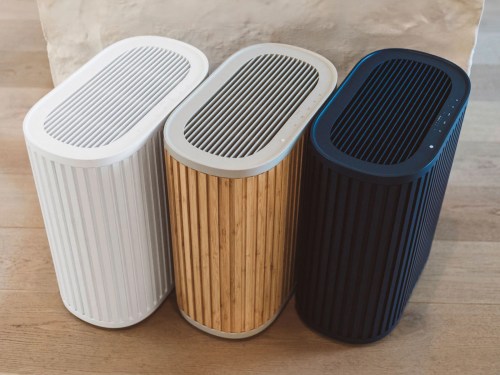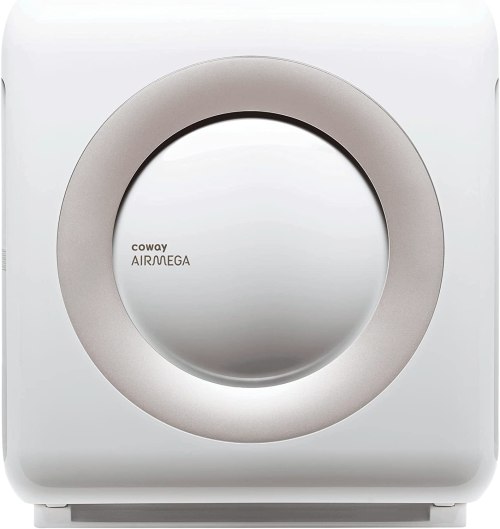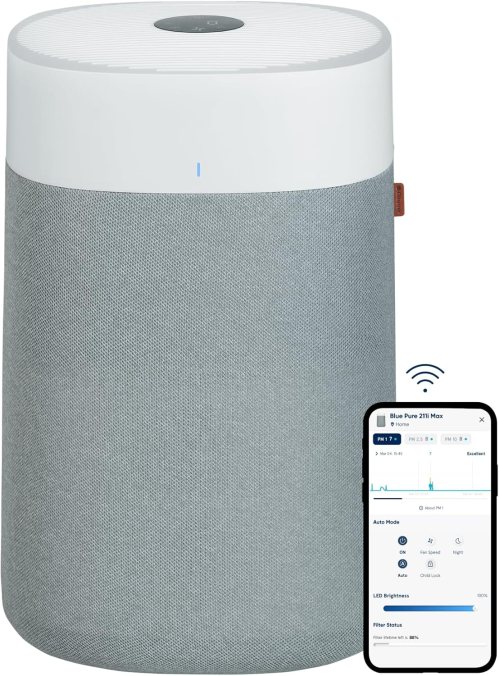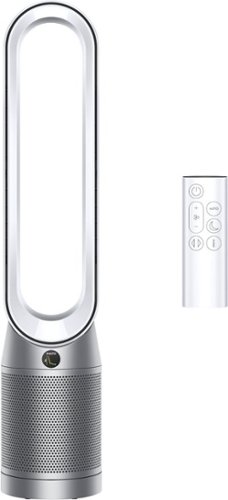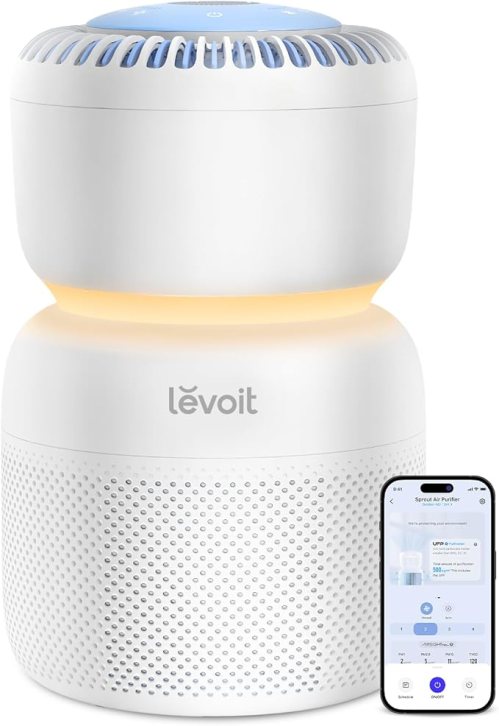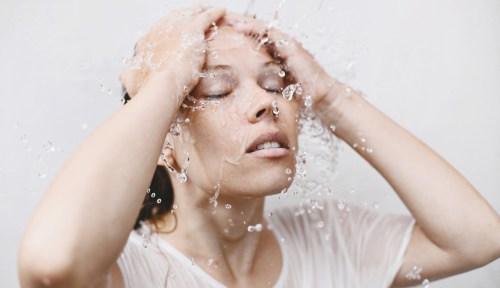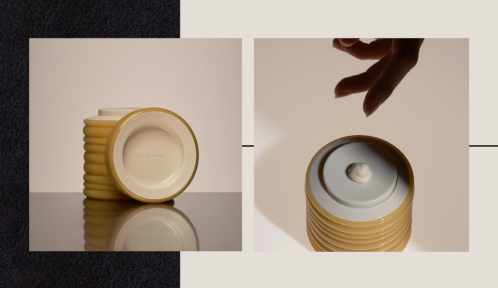Our editors independently select these products. Making a purchase through our links may earn Well+Good a commission
Even if your home is spotless, your indoor air quality is probably not as clean as you think. That's not your fault—there are tons of factors that impact the air quality in our living spaces, from seasonal allergens and pet dander to cooking oils and chemical-based cleaning products. Plus, if you live in an area that's prone to wildfires, you may be subject to soot and smoke particles making their way into your home. The good news? If you're hoping to freshen up your indoor air, there are plenty of accessible, in-home appliances that can help. Read on for a few of the best air purifiers for all types of spaces, including several we've tried firsthand.
Experts in This Article
CEO of Allergy Standards
Best air purifiers, at a glance
- Best looking: Windmill Air Purifier, $359
- Best value: Coway Airmega AP-1512HH, $204
- Best for large spaces: Blueair Blue Pure 211i Max, $349
- Best for small spaces: Levoit Core Mini, $50
- Best purifier-fan combo: Dyson Purifier Cool Gen1, $330
- Best for the nursery: Levoit Sprout, $280
- Best for odors: Winix 5510 Air Purifier, $180
Do you need an air purifier?
John McKeon, MD, CEO of Allergy Standards, a company that certifies air purifiers as allergy and asthma friendly for the Asthma and Allergy Foundation of America (AAFA), says that having good indoor air quality is an important part of living in a healthy home. According to Dr. McKeon, indoor air quality can be two to five times more polluted1 than outdoor air quality. “Outdoor air quality is an issue. But the air inside, where we spend most of our time, has a number of pollutants added to it,” he says.
While we introduce third-party allergens like pollen and animal hair to our homes, our indoor environment also creates allergens naturally. Dust mites build up and thrive off of dead skin2. Particles are released into the air whenever there’s a furnace, wood-burning fire, or candle3. Cooking releases oil and fat particulates4 into the air. “The particles of concern are the ones you can’t see,” adds Jake Read, advanced design engineer at Dyson.
The specifics of your home environment also impact air quality, explains Dr. McKeon. Since newer, more energy-efficient homes don’t have the same gaps and cracks as older homes, there’s less air circulation5, he says. Humidity can lead to higher dust levels. Newly installed floors and furniture can release chemicals into the air.
Now, all of this isn’t meant to freak you out—when it comes to indoor air quality and health, Dr. McKeon says an allergen is really only an issue if it bothers you.
“It would be wrong to spread a message that everybody needs to have an air purifier. Many people benefit by having a device to clean the air, but people may live in an indoor environment that’s got good air quality already and it’s well ventilated,” says Dr. McKeon. “If you’ve got a good indoor air quality and you are not suffering symptoms, and you’re somebody who’s not bothered by some of those indoor allergens anyway, then it’s probably not required.”
If you know your triggers, it’s also possible to reduce the amount of allergens in your indoor air by doing things like vacuuming more, getting rid of pests, and installing a humidifier or dehumidifier, depending on your space’s needs. But whether or not you’re bothered by indoor allergens, Dr. McKeon says some people just like the assurance of having an air purifier to know they’re breathing clean air.
Keep in mind that the air purification system you choose is only as good as the way you use it. “You’ve got to run that thing 24/7,” says indoor air quality expert Vinny Lobdell, global president of HealthWay. When purchasing an air purifier, Dr. McKeon says it’s important to look for one that’s validated by a third-party testing organization to ensure it’s effectively removing and trapping allergens.
The best air purifiers to improve indoor air quality
As an apartment dweller, designating floor space to an appliance means it better be good—and it better not be ugly. Luckily, this air purifier from Windmill ticks both of those boxes. Not only does it cover 1,950 square feet in an hour with three steps of filtration, but I have the sleek bamboo style in my living room and it honestly blends with my decor in a way other purifiers could never. It's super quiet and easy to control either via the buttons on top or the handy Windmill app where you can set a schedule, put it in "sleep mode," or check on your air quality from afar. I even received an email alert the other day to let me know my air quality was bad (I was cooking with sesame oil—it hates that!).
My only issue with this purifier is that it sucks in air from the back of the device, which means that for it to have the best access to your air, it really shouldn't be pressed up against the wall (the way it's advertised). I solved for that by positioning it vertically instead and did my best to hide the cable.
Pros:
- 3 color options to match your aesthetic
- Easy-to-use companion app
- Sleep mode and Eco mode options
- 3-step filtration
- Large room coverage
Cons:
- Entry point in the back makes for awkward positioning
- Pricey replacement filters ($60)
For a purifier that covers a lot of ground at a pretty reasonable price, the Coway Airmega AP-1512HH is hard to beat. Sure, it looks like a giant iPod Shuffle (RIP to those), but it cycles through air five times per hour in a 361 square-foot room and features four-stage filtration to capture pollen, dust, and odors in the air. I have this purifier in my office-slash-guest-bedroom and it's really easy to use and clean. I keep mine in Eco Mode, which means it runs at the lowest setting until it notices something in the air and revs up to a higher setting—I've watched it spring into action over a blown-out candle and odors from cleaning supplies.
Pros:
- Solid coverage
- 4-stage filtration (including a True HEPA filter)
- 3 speeds, plus an Eco Mode and timer option
Cons:
The 12 Best—and Healthiest—Protein Powders, According to Registered Dietitians
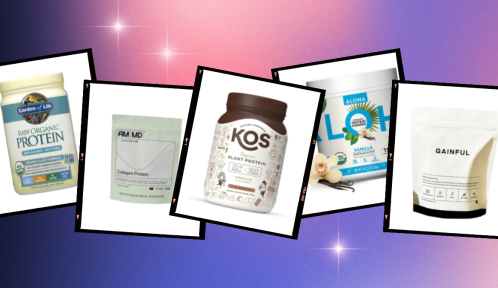
Want To Transform Your Outdoor Space into a Calming, Boho-Chic Escape (Um, Yes)? Start with These Steals
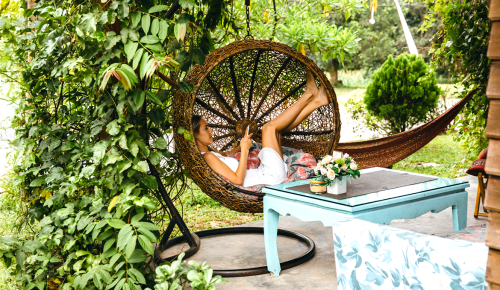
I Tried Amazon’s Best-Selling Vibrator That Shoppers Say ‘Brought Them to Intense Climax Every Time’—And Here’s What Happened
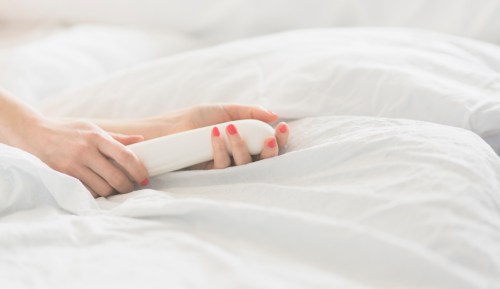
- Larger footprint
- Design doesn't blend in with surroundings
Blueair’s largest air purifier can cycle through the air in 1,348 square feet in an hour. It silently filters the air to remove 99.97 percent of airborne particles, making it a good choice for kitchens, living rooms, or big bedrooms. If you're on the hunt for third-party certifications, this pick might be up your alley: Not only is Blueair a certified B-Corp, but the brand’s products are verified by the Association of Home Appliance Manufacturers for Clean Air Delivery Rate, the EPA for Energy Star rating, and the California Air Resources Board for electrical safety and ozone emission. Also worth noting: additional washable pre-filters ($13) to match your decor are available in a variety of colors.
Pros:
- Covers a large footprint
- Verified by reputable sources and highly rated
- Companion app for easy usage
- Machine-washable pre-filters
- Other pre-filter colors available
Cons:
- Pretty chunky design (but covers a lot of ground)
I have this little purifier in my bedroom—yes, this is the third purifier I've mentioned owning, don't judge me for liking fresh air! Even though it's small, it's super quiet and definitely does a good job of sucking up dust in rooms up to 337 square feet. It's a no-frills purifier—there's no companion app for this model (although there are larger smart purifiers from Levoit worth checking out) and the design uses one simple button to toggle through the device's three speeds. There's only one filter inside, but it uses ultra-fine nylon and carbon to capture pollutants and odors. The filter needs to be replaced every six months (with Levoit's replacement filters), but you can clean the filter regularly with a vacuum to extend its lifespan.
Pros:
- Very easy to use
- Quiet operation
- Small footprint fits in smaller spaces
Cons:
- Only one filter type inside (no pre-filter)
With this tower fan, Dyson tackles two common air quality problems at once: dirty air and hot air. It uses a glass HEPA and carbon filter to remove 99.97 percent of allergens and pollutants as small as .03 microns, including pollen, mold, and bacteria, while also cooling your room with, well, purified air. The fan oscillates up to 350 degrees to cool the entire space (this particular purifier is recommended for rooms up to 800 square feet) and caring for it is easy, too—the purifier will let you know when the filter needs to be changed, so you never miss a beat.
Pros:
- Doubles as a tower fan
- HEPA filters are easy to replace
- Magnetic remote for easy access
Cons:
- Pricey for a smaller coverage footprint
The Levoit Sprout was designed with babies in mind. Not only is this smaller purifier meant for nursery-sized rooms (it cycles through the air once per hour in rooms up to 637 square feet), but it has some added bells and whistles, too. On top of a HEPA filter, which works to capture 99.9 percent of ultra-fine airborne particles, it also features a nightlight and white noise function to help make your baby's nursery as comfortable (and sleep-inducing) as possible. You can control all of the Sprout's many functions via the top of the device or on the Levoit companion app, which lets you schedule the device and check on the status of your filters.
Pros:
- Added white noise and nightlight features
- HEPA filter cycles through rooms up to 637 square feet every hour
- Can be controlled via the Levoit app
Cons:
- Higher price point for smaller spaces
If odor is your main concern, this pick from Winix might be the right fit for your home. It uses a true HEPA filter to capture smaller particles, a mesh pre-filter to capture dust and debris, and a carbon filter to tackle odors from smoke, cooking, and fur-children. Despite its moderate price point, the 5510 is up to the task and can cycle through the air in larger rooms up to 1,881 square feet once an hour. The only real downside to this purifier is its rather stark design.
Pros:
- Moderate price point for larger spaces
- Three-stage filtration including a true HEPA filter
- Carbon filter tackles odors from smoke, pets, and cooking
Cons:
- Not very attractive
- U.S. Environmental Protection Agency. "Indoor Air Quality." https://www.epa.gov/report-environment/indoor-air-quality (2024) ↩︎
- Wilson, Jeffrey, et al. "Home Environmental Interventions for House Dust Mite." The Journal of Allergy and Clinical Immunology: In Practice vol. 6, issue 1. Jan. 2018, https://doi.org/10.1016/j.jaip.2017.10.003. ↩︎
- U.S. Environmental Protection Agency. "Indoor Particulate Matter." https://www.epa.gov/indoor-air-quality-iaq/indoor-particulate-matter (2024) ↩︎
- Sharma, Ruch, et al. "Evaluation of the effectiveness of a portable air cleaner in mitigating indoor human exposure to cooking-derived airborne particles." Environmental Research vol. 183. Apr. 2020, https://doi.org/10.1016/j.envres.2020.109192 ↩︎
- Militello-Hourigan, Ryan, et al. "The impacts of cooking and an assessment of indoor air quality in Colorado passive and tightly constructed homes." Building and Environment vol. 144 573-582. Oct. 2018, https://doi.org/10.1016/j.buildenv.2018.08.044 ↩︎
Sign up for the Well+Good SHOP Newsletter
Get exclusive deals on wellness, beauty, fitness, and food products that have been hand-picked by our editors.
Got it, you've been added to our email list.

